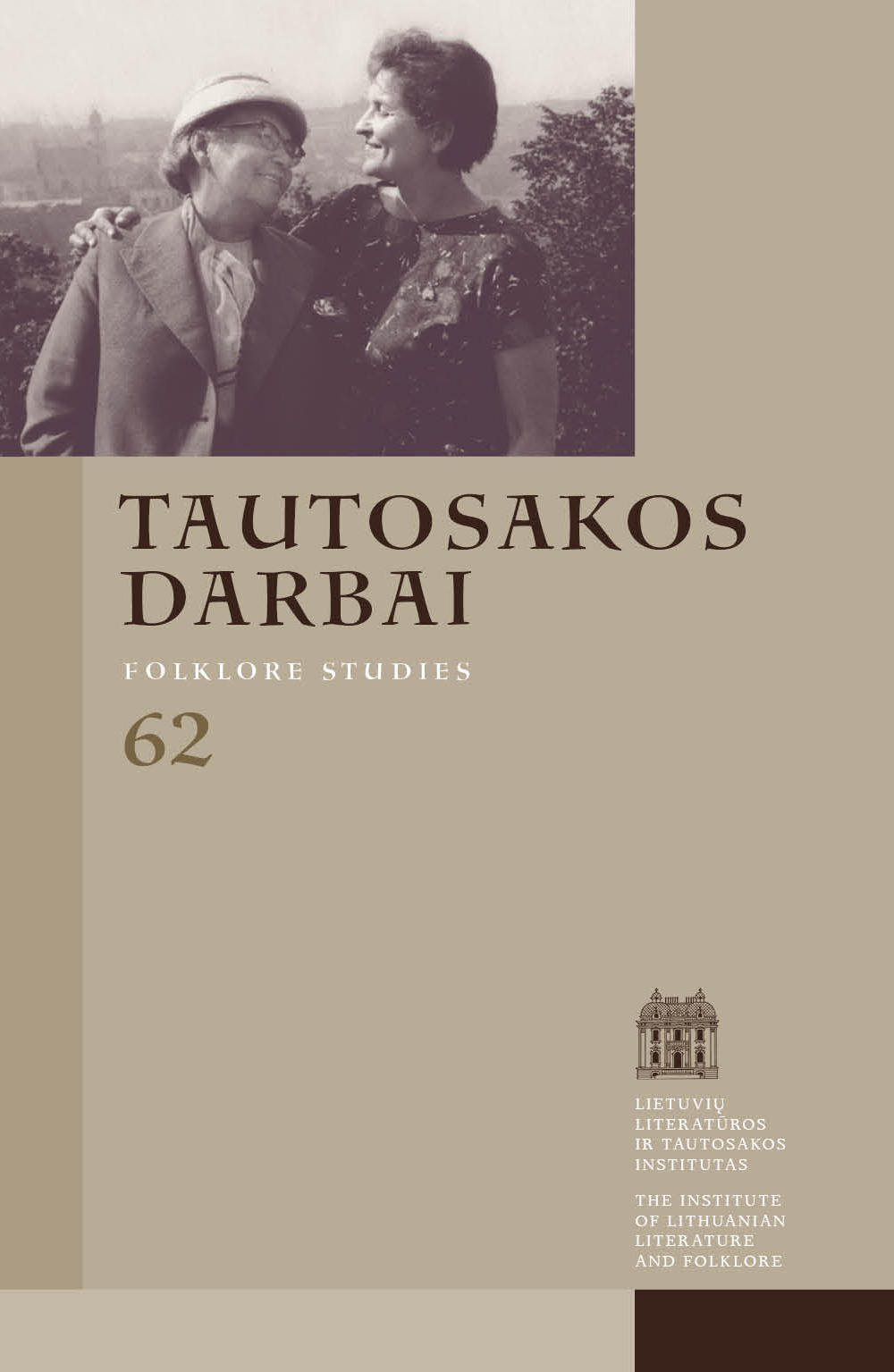Latvian Laumas: Reflections on the Witchisation of Tradition
Abstract
In Baltic languages, the word laume/lauma initially referred to a certain supernatural being (Lithuanian laumė, Latvian lauma/laume, Prussian *laume). The analysis of written sources and folklore related to this supernatural being allows for the conclusion that Lithuania is both the core and the relic area of the laumė tradition, where the original beliefs have been retained; while Latvia, located at the periphery of the tradition territory, is the innovation area, where the perception of this supernatural being was substantially transformed. It was humanised and incorporated in the witchcraft belief system prior to or during the period of witch persecution (the 16th to 18th centuries). The article attempts to analyse the corpus of lauma tradition in order to clarify its position in the historical typology of Latvian witchcraft beliefs. The first chapter briefly describes three chronological stages of the development of Latvian witchcraft beliefs (night, dairy, and diabolic witches), characterises the lauma folklore sources and previous research. The second chapter analyses the lauma text corpus and attempts to find out which stages of the historical typology of witchcraft beliefs are reflected in the lauma folklore of the 19th–20th centuries. In the third chapter the hypothesis about the transformation of laumas from supernatural beings to dairy witches is argued.
Downloads
Most read articles in this journal
- Oksana Labashchuk, Tetiana Harasym, Tetiana Reshetukha, Katarzyna Majbroda, Oksana Verbovetska, Ukrainian Narratives about the Outbreak of the War: The Main Themes, Structure and Composition , Tautosakos darbai: Vol. 66 (2023): Tautosakos darbai
- Michele Tita, Healing Songs and Music in Southern Italy: the Case of Tarantism , Tautosakos darbai: Vol. 59 (2020)
- Tomas Čelkis, The Old People in the Historical Sources from the 14th–16th Century Grand Duchy of Lithuania. Who Were They? , Tautosakos darbai: Vol. 66 (2023): Tautosakos darbai
- Giedrė Buivytė, Shifting Emotional Expression in Lithuanian Love Songs , Tautosakos darbai: Vol. 63 (2022)
- Daiva Vaitkevičienė, Charming and Praying: the Soft Power in the Lithuanian Charms , Tautosakos darbai: Vol. 64 (2022)
- Solveiga Šlapikienė, Angels and Devils in the Traditional Lithuanian Worldview: Affinities and Oppositions , Tautosakos darbai: Vol. 66 (2023): Tautosakos darbai
- Ilja Lemeškin, The Baltic and Arabic Character of the Sovius Tale. The Origins of the Mythonym , Tautosakos darbai: Vol. 49 (2015)
- Aistė Petrauskienė, Features of the Lithuanian Partisan Underground State , Tautosakos darbai: Vol. 53 (2017)
- Algis Mickūnas, The Consciousness of a Partisan: Rather Die than Be a Slave , Tautosakos darbai: Vol. 53 (2017)
- Viktorija Šeina-Vasiliauskienė, The National Policies in Lithuania from 1944-1956 , Tautosakos darbai: Vol. 65 (2023): Tautosakos darbai




